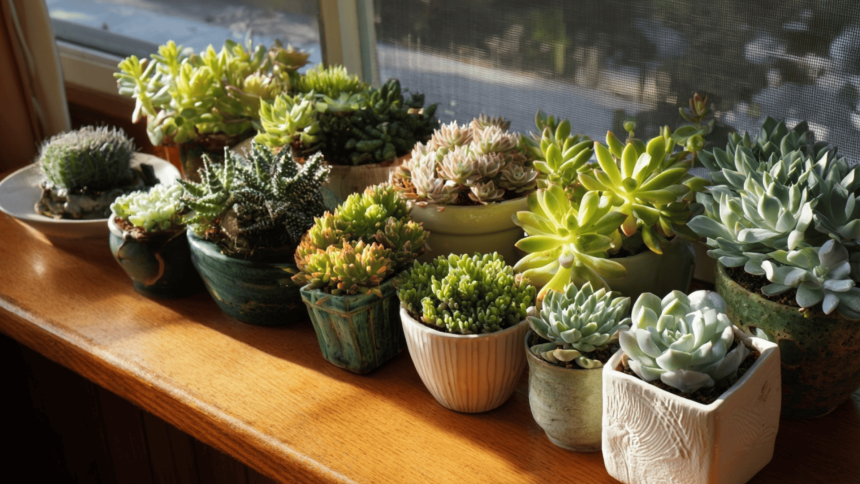Succulents have become favorites for plant lovers everywhere because they’re easy to care for and look beautiful all year round.
Their soft colors and unique shapes make them stand out on any windowsill or garden corner.
Learning how to grow succulents and how to propagate them opens the door to growing more of them from the ones you already have.
It’s a calm, rewarding process that connects you with nature and helps your collection grow without much effort.
With the right conditions and a little patience, you can enjoy watching new life forms from your own plants.
What Is Plant Propagation?
Plant propagation is the process of producing new plants from parts of an existing plant, such as leaves, stems, or roots.
It can occur naturally or through human effort in gardens and nurseries. There are two main forms: sexual propagation, which uses seeds, and asexual propagation, which reproduces plants from cuttings or divisions.
Asexual methods create clones that retain the same traits as the parent plant. Propagation is widely used to multiply healthy plants, preserve special varieties, and maintain plant health.
For succulents, this approach works especially well since they root quickly and grow new plants easily from leaves or stem pieces.
How Long Do Succulents Live?

Succulents are naturally long-living plants, prized for their ability to survive harsh conditions and adapt to changing environments.
- Average Lifespan: Most succulents live 5–25 years, depending on their type, care, and growing environment.
- Indoor Succulents: Usually live 8–12 years when kept in bright light and watered only when the soil is fully dry.
- Outdoor Succulents: Can thrive for 20+ years, especially in warm climates with proper drainage and mild winter conditions.
- Slow-Growing Varieties: Like Haworthia or Gasteria, often live longer because they use less energy and grow steadily.
- Fast-Growing Varieties: Such as Echeveria, may need pruning or propagation to extend lifespan and prevent aging stems.
With healthy propagation habits and balanced care, succulents show high survival rates, successfully rooting and regenerating in over 90%.
Supplies You’ll Need
|
How to Propagate Succulents
Revive your leggy Echeveria and create new plants from its parts. With patience, good airflow, and the right mix, you’ll soon have healthy, compact rosettes and thriving new succulents.
Step 1: Select Your Succulent
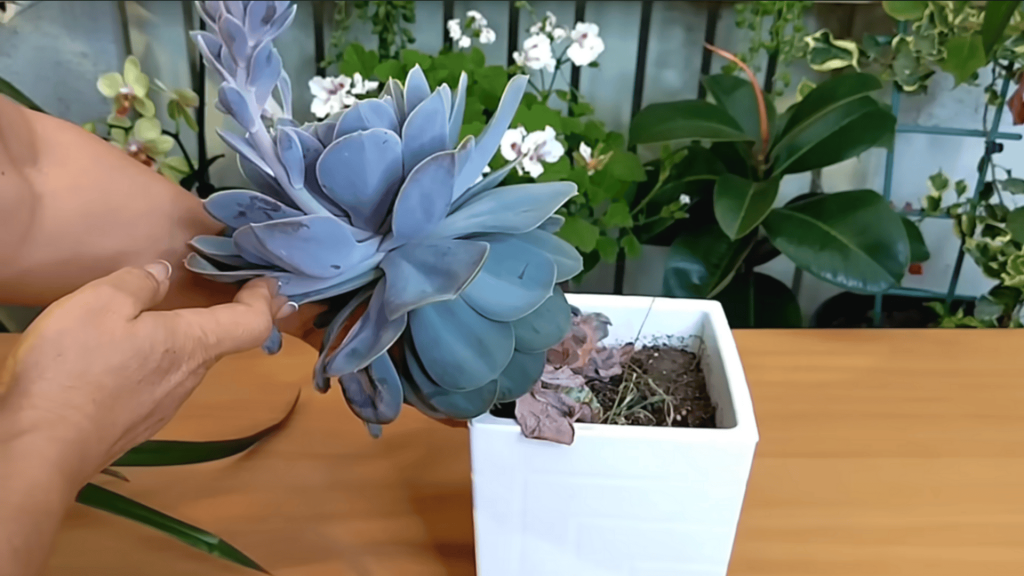
Choose a healthy, mature succulent with firm leaves and a sturdy stem. Avoid plants with soft, discolored, or damaged parts. Inspect for pests or signs of rot before cutting.
Selecting a strong mother plant ensures better propagation success and healthier growth for all your new baby succulents.
Step 2: Remove Flower Stalks
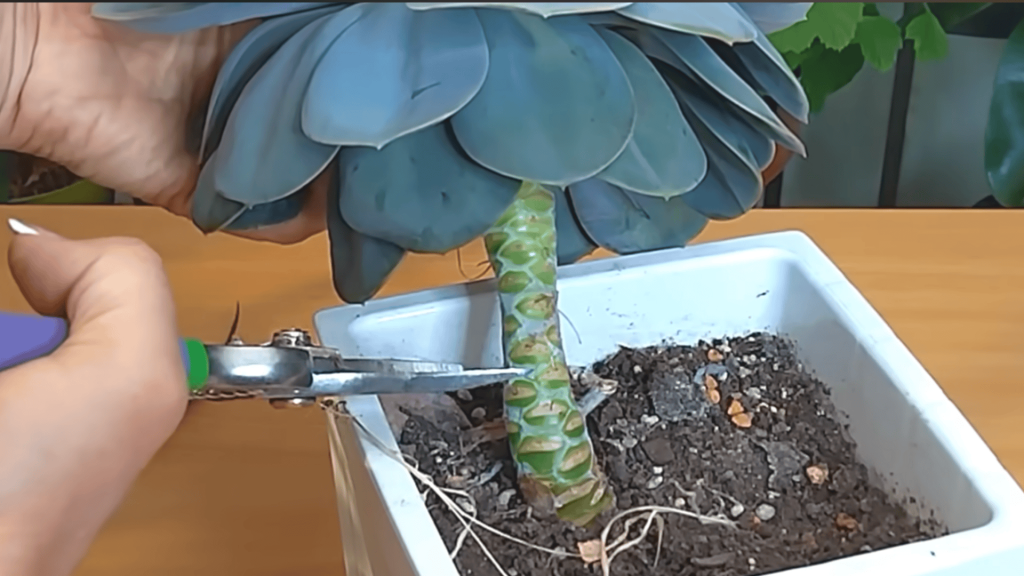
Cut off any flower stalks at their base. Keep small rosettes that grow on these stalks; they can be rooted later.
Removing stalks redirects the plant’s energy into growth and makes handling easier for the reshaping and propagation steps.
Step 3: Detach Lower Leaves
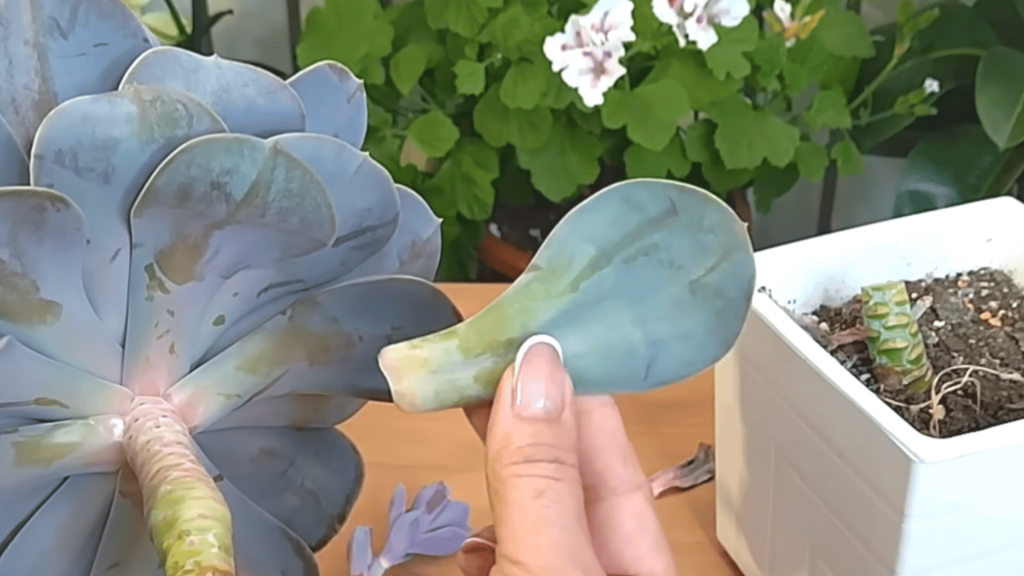
Twist and remove dry or stretched leaves from the lower part of the stem. Choose healthy, unbroken ones for propagation.
Lay them aside on a dry tray. Clean removal prevents rot and encourages balanced regrowth in the main rosette.
Step 4: Cut the Top Rosette

Trim the top rosette from the stem, leaving 3–5 cm of stem attached. This cutting will become your main new plant.
The old stump often sprouts new offsets later. A sharp, clean cut is essential for quick healing and strong roots.
Step 5: Let Pieces Callous

Allow all cut surfaces, leaves, rosettes, and stalk pieces to dry for several days out of direct sunlight.
This creates a protective callous that prevents rotting. Patience here is key; only plant once surfaces feel firm and slightly roughened.
Step 6: Prepare and Moisten Soil
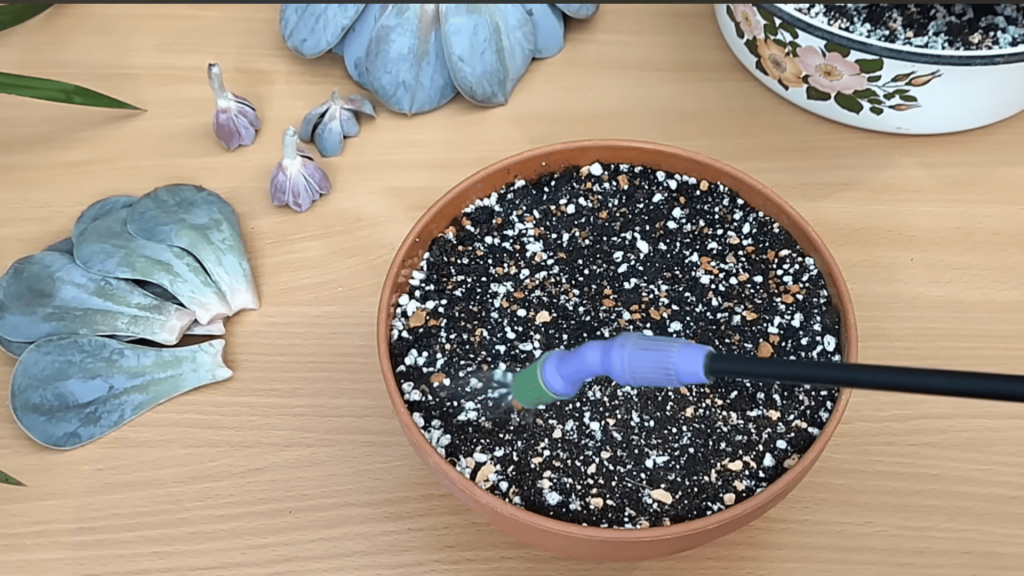
Mix equal parts potting soil, perlite, and zeolite or pumice for a light, well-draining substrate. Add clay pellets to the pot bottoms for drainage.
Lightly moisten the soil; it should feel barely damp, ensuring roots get air while avoiding sogginess.
Step 7: Plant and Propagate
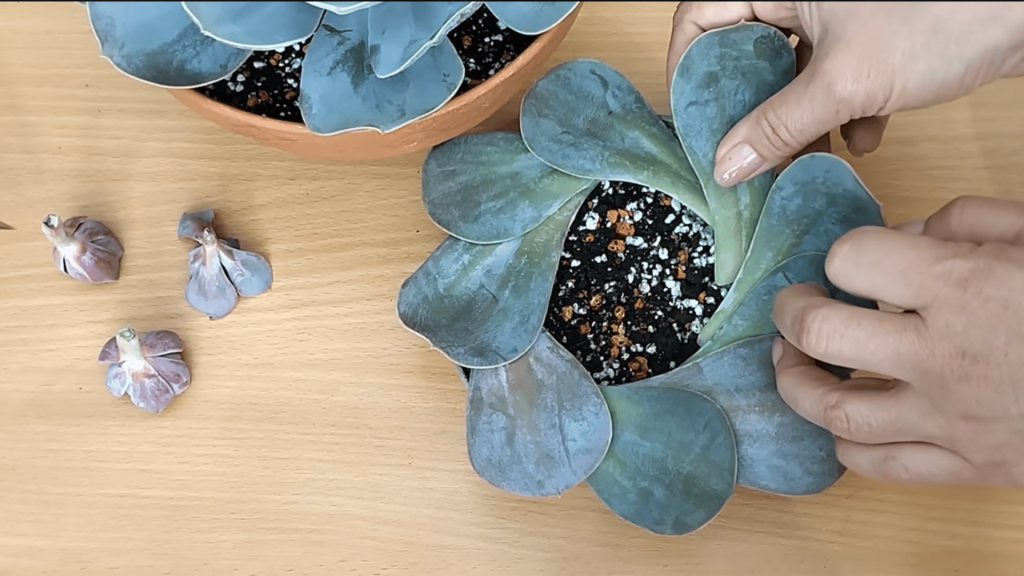
Place calloused leaves on the surface of moist soil and insert rosette cuttings upright into pots. Keep everything in warm, indirect light.
Mist occasionally to maintain gentle moisture. Within weeks, roots and tiny baby rosettes will start forming.
Step 8: Care and Transplant

After about three months, separate the new baby Echeverias from the dried parent leaves.
Pot them into fresh soil, remove any lower leaves that might touch the mix, and water lightly. Continue with bright light, dry intervals, and good airflow for lasting health.
For a more detailed video on propagating succulents, watch “Everything About Plants” for simple visuals, expert tips, and real results.
Quick Troubleshooting for Succulents
Even the healthiest succulents can face small issues during growth. Use these quick fixes to help them recover fast.
- Shriveled Leaves: The air is too dry or the light is too strong; mist lightly and increase nearby humidity levels carefully.
- Root Rot: Soil stays wet too long; cut damaged parts, let dry, and replant in fresh mix.
- Stalled Growth: If the temperature is too low or the light is too low, move to a brighter spot and maintain warm, steady conditions.
- Stretching (Etiolation): Not enough light exposure; place the plant near a window or use a gentle grow light daily.
- Fading Color: Excess direct sun; move the plant to filtered light to gradually restore its healthy, rich leaf color.
Regular observation and timely care ensure your succulents stay strong, colorful, and resilient throughout every growing season.
Methods of Succulent Propagation
Propagation helps create new succulents from existing ones, using several easy techniques suited for different plant parts.
| Method | How It’s Done | Result |
|---|---|---|
| Leaf Propagation | Place leaves in the air, soil, or water | Roots and pups grow naturally |
| Stem Propagation | Insert cut stems into soil or water | New shoots form from stem nodes |
| Root Propagation | Cut above soil; keep roots intact | Roots regrow and form fresh shoots |
| Soil Propagation | Lay leaves or stems on dry soil | Roots appear directly, forming growth |
| Water Propagation | Submerge the tips in water | Roots grow in water before planting |
| Air Propagation | Keep leaves dry in open air | Roots form naturally before planting |
Among all, leaf, stem, and soil propagation remain the simplest and most common methods for growing healthy succulents.
Making The Decision
Propagating succulents teaches patience, consistency, and gentle care, as each leaf or cutting slowly transforms into a thriving new plant.
Watching fresh roots and tiny rosettes appear feels satisfying and reminds us of growth in its simplest form.
With steady light, the right soil, and balanced watering, these young succulents will flourish and add life to any space.
Sharing them with friends or arranging them creatively can make the process even more enjoyable.
So start today, collect a few leaves, prepare your soil, and grow something beautiful from your own hands.
Frequently Asked Questions
How Often Should I Water New Cuttings?
Water lightly every few days until roots form, then follow a proper soak-and-dry watering schedule.
Can I Propagate Succulents Without Sunlight?
No, indirect sunlight is essential for rooting; dark conditions prevent growth and increase the risk of rot.
Why Are My Propagated Leaves Turning Brown?
Excess water or harsh sunlight causes browning; keep leaves shaded and mist only when the soil feels dry.
Can Succulents Grow Indoors Year-Round?
Yes, with bright indirect light, steady airflow, and minimal watering, succulents remain healthy and vibrant indoors year-round.

